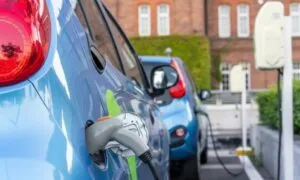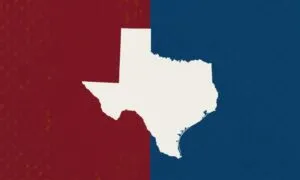In the third quarter of 2025, more than 25 percent of federal student loan borrowers, roughly 13 to 14 million out of over 40 million total, suspended payments through deferment or forbearance programs.
This pause in repayment is not a return of the COVID-era moratorium, but rather a surge in borrowers actively seeking relief under existing mechanisms such as administrative forbearance, deferment for hardship, or the SAVE plan’s interest-adjusted forbearance.
According to data and analysis by experts like Mark Kantrowitz, the number of paused loans has quadrupled compared to 2024 levels, highlighting both the ongoing financial struggles of households and the structural challenges of the federal loan system.
Table of Contents
ToggleWhy Borrowers Are Pausing Payments?

The sharp rise in paused payments is tied to multiple factors. First, the cost of living in 2025 remains elevated, with inflation still outpacing wage growth for many working households.
Rent, health insurance premiums, and grocery prices have left borrowers with less disposable income. Second, the resumption of federal student loan payments in late 2023 ended a three-year pandemic moratorium, leaving millions scrambling to re-adjust budgets.
Many borrowers tried to make payments in 2024, but by 2025, an increasing share turned to deferment and forbearance to regain breathing room.
Additionally, the Biden administration’s SAVE repayment plan created a safety net for lower-income borrowers, capping monthly payments at a smaller percentage of discretionary income. However, not everyone qualifies or finds the process straightforward.
Those unable to afford even reduced payments often end up in administrative forbearance, technically current on paper, but building up interest obligations.
The Numbers Behind the Pause
The data show just how dramatic the shift has been from 2024 to 2025:
| Category | Q3 2024 | Q3 2025 | Change |
|---|---|---|---|
| Borrowers in Forbearance | 2.9 million | 10.3 million | +255% |
| Borrowers in Deferment | 2.4 million | 3.4 million | +42% |
| Total Paused Borrowers | 5.3 million | 13.7 million | +158% |
| Share of All Borrowers (≈40 million) | ~13% | ~25–27% | Doubled |
*Data analyzed by Mark Kantrowitz (2025); reported by The Times of India.
This means that by the third quarter of 2025, one in four borrowers had stopped making payments, compared to just one in eight the year before.
What “Paused Payments” Really Means

It is important to understand that a payment pause today is not the same as the nationwide pandemic moratorium. Instead, it comes from two legal options:
- Forbearance – A temporary suspension of payments, often due to financial hardship. Interest usually continues accruing, increasing the total balance over time.
- Deferment – A temporary suspension granted for specific circumstances, such as unemployment, military service, or school enrollment. In some cases (like subsidized loans), interest does not accrue during deferment.
While these options give short-term relief, they can also extend repayment timelines and increase the lifetime cost of loans. Many borrowers pausing now may face a much larger balance when they resume.
Why This Surge Matters
The fact that over 25% of borrowers paused payments in 2025 points to deeper structural problems:
- Affordability Gap: Many borrowers simply cannot balance rising living costs with repayment schedules, even under income-driven repayment.
- Policy Tension: The administration faces pressure between offering relief and containing the fiscal cost of the student loan program.
- Household Debt Burden: With student loan debt topping $1.6 trillion, millions of people extending repayment terms delay financial milestones such as homeownership, family planning, and retirement saving.
- Credit Market Risk: While forbearance itself is not delinquency, high reliance on it may signal broader risks in consumer lending markets.
Considering Alternatives
While deferment and forbearance provide temporary relief, they are not long-term solutions for everyone. Some borrowers who remain in good standing may explore the option to refinance student loans as a way to lower interest rates or reduce monthly payments.
Refinancing can be attractive for those with stable income and strong credit profiles, since it may cut the total cost of repayment over time.
However, refinancing federal loans into private ones means giving up important protections such as income-driven repayment, deferment, and potential forgiveness programs.
This trade-off makes refinancing suitable only for certain borrowers, usually higher earners who are confident in their repayment ability and want to save on interest.
For others, staying within the federal system, even with pauses and subsidies, may provide greater security despite higher long-term costs.
Impact on Borrowers
| Type of Pause | Short-Term Benefit | Long-Term Risk |
|---|---|---|
| Forbearance | Stops immediate payments; protects from delinquency | Interest accrues, larger future balance, longer repayment |
| Deferment | Stops payments, in some cases, interest-free | Temporary only; may not resolve affordability |
| SAVE Plan Forbearance | Caps payments based on income, and the interest subsidy reduces growth | Complex enrollment; some may still default if income rises |
| Voluntary Non-Payment (delinquency) | No paperwork needed | Credit damage, wage garnishment, and collection fees |
For many borrowers, pausing payments was not about strategy but necessity. A household already struggling with rent and groceries may see no alternative. Yet the long-term implications, higher balances, prolonged repayment, and delayed financial security are significant.
Policy Outlook
The sharp increase in paused payments is almost certain to reignite debate in Washington. Proponents of broader loan forgiveness point to the data as evidence that the current repayment framework is not sustainable for millions of households. In their view, the growing reliance on deferment and forbearance shows that structural reform, not temporary relief, is needed.
Opponents, however, warn that extending or expanding relief programs risks undermining fiscal responsibility. They argue that large-scale pauses or forgiveness shift costs onto taxpayers and weaken incentives for borrowers to repay.
At the same time, the Department of Education is expected to tighten oversight of loan servicers. Some companies have been criticized for steering borrowers toward forbearance, even when income-driven repayment plans might be more sustainable. Advocacy groups are pushing for automatic enrollment into programs like SAVE to ensure that borrowers benefit from lower payments and reduced interest accrual without unnecessary delays or paperwork barriers.
Methodology
We reviewed 2024 and 2025 quarter-on-quarter loan data to identify shifts in forbearance and deferment usage.
To make the trends clear, we translated raw numbers into easy-to-read tables that highlight both scale and percentage change. Policy context was drawn from reporting in The Times of India and financial education resources such as LendEdu and Nelnet Student Aid.
Each section was structured to move from hard numbers to real-world impact, so readers can connect policy debates with household realities. Finally, we concluded with forward-looking insights to frame the data within the larger conversation about student debt in America.
Conclusion
The bottom line is simple: in Q3 2025, over one in four federal student loan borrowers were not making payments. That statistic reflects not just individual hardship, but systemic strain in America’s higher education finance system.
Forbearance and deferment have given temporary relief, but unless repayment structures or broader reforms evolve, millions of borrowers could emerge from this pause period with even heavier burdens than before.
Related Posts:
- Who Do You Contact If You Have Questions About…
- How to Survive as a Student in the United States…
- What Is the Maximum Amount You Can Get for a Small…
- Why Restarting Student Loan Collections Could Deepen…
- 26 Most Dangerous Cities in US - Updated Statistics for 2025
- America's Murder Capitals: A 2025 Ranking of the…








